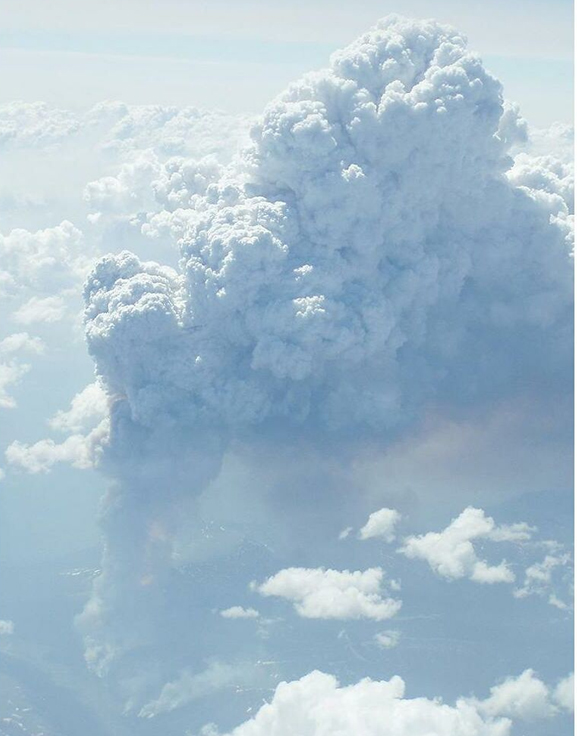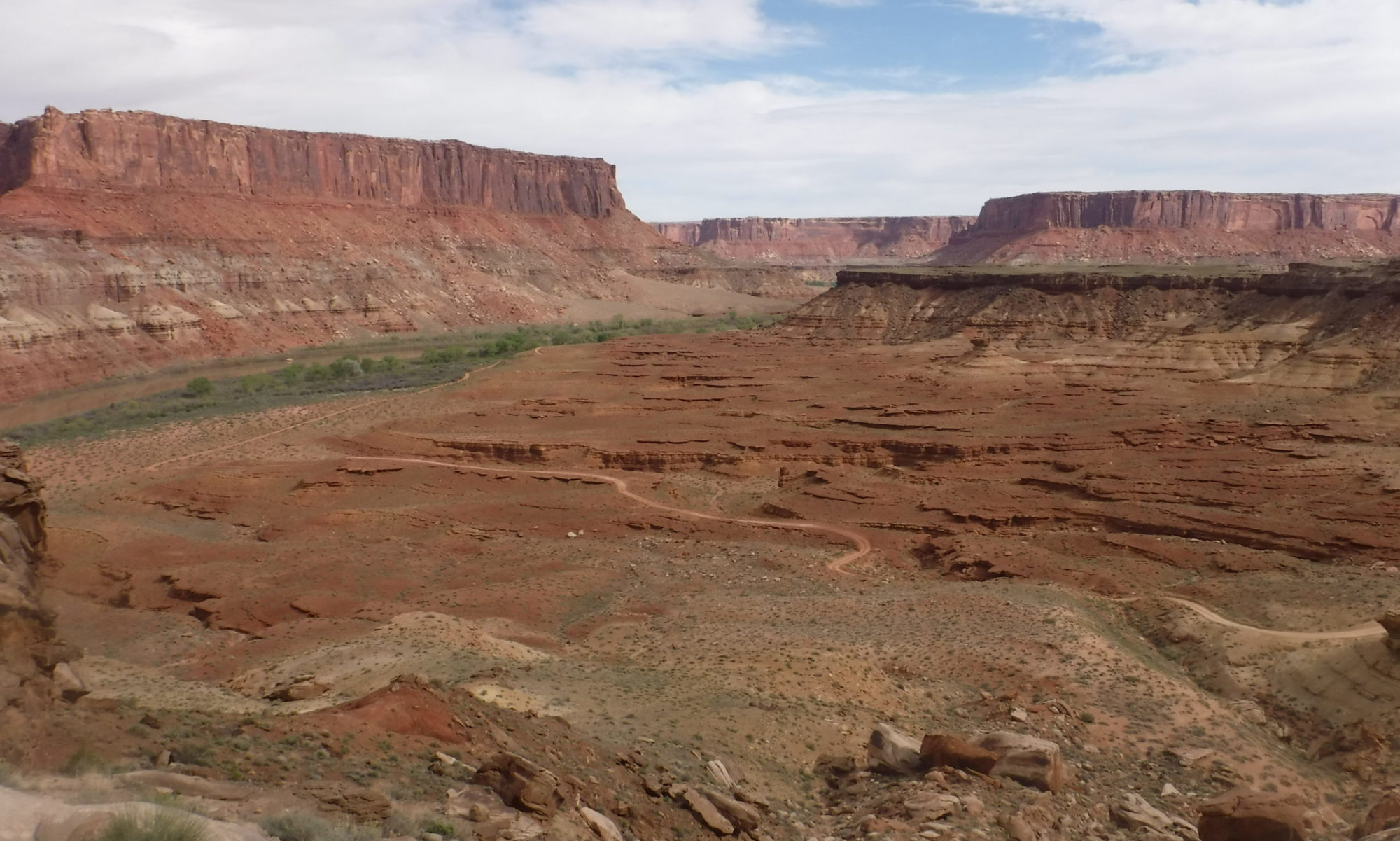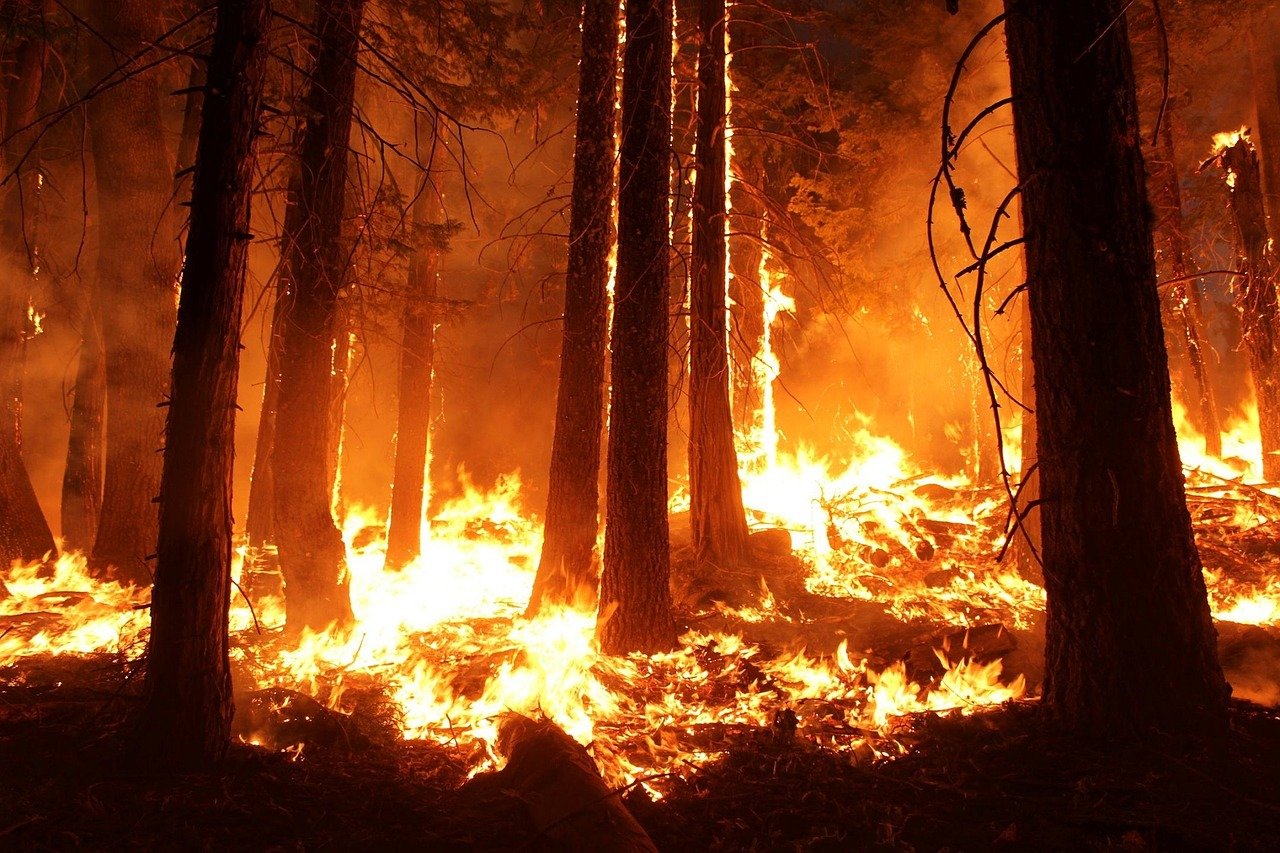Featured Image: Picture of a wildfire by skeeze on Pixabay
Paper: Extreme Pyroconvective Updrafts During a Megafire
Authors: B. Rodriguez, N. P. Lareau, D. E. Kingsmill, and C. B. Clements
Atmospheric updrafts, or columns of air moving quickly upward, are typically associated with severe thunderstorms and tornadoes and have been studied using radar and airplane data for decades. The extreme heat from large, intense fires can also cause updrafts, but this type of updraft has barely been studied by atmospheric science researchers. Understanding the formation and structure of fire-generated updrafts is important because they can be hazardous to aircraft, can loft embers far distances and spark new fires, and can even initiate fire-generated thunderstorms. A recent study has revealed just how powerful these updrafts above large fires can be.
A team of researchers, led by Bruno Rodriguez, analyzed novel observations of the environment above a large fire using both ground-based and airplane radar data and weather balloon observations. They studied the Pioneer Fire, which burned from July 18 to September 15, 2016 in Idaho. Over its 3.5 month lifetime, this fire burned about 188,000 acres, which is about half the size of the island of Guam. Specifically, they focused on data from August 29, when a large fire-generated thunderstorm developed during a rapid north-eastward advancement of the fire.
Their analysis, published in Geophysical Research Letters, showed that the fire-initiated updrafts can reach speeds comparable to those observed in severe thunderstorms and tornadoes. The strongest updraft they observed had a speed of 58.3 m/s (130.4 mph) and was located far above the ground at 5 km (3.1 miles) up in the atmosphere! This extreme updraft was embedded within a 2-km region that contained multiple other updrafts with speeds exceeding 50 m/s (112 mph). At the edges of this region, they also found numerous downdrafts, with air moving downward at speeds of 29.3 m/s (65.5 mph). These downdrafts are driven by the updrafts since when some air goes up, some air also has to come down.
What is the cause of the updrafts? The updrafts are driven by temperature differences created by the fires between the air in the updraft columns and the environmental temperature. Temperature differences of 8°F or higher cause the air within the columns to be extremely positively buoyant and rise up very quickly. While most of the updrafts only have enough energy to reach the mid-atmosphere, some wetter updraft columns have additional energy due to the fact that when water vapor condenses, energy is released. These updrafts have enough energy to reach the top of the troposphere and form the fire-generated thunderstorms, which result in lightning and sometimes rain. It is these unusually hot and moist updraft cores that initiate thunderstorm clouds.

It’s important for us to know how strong updrafts above large fires can be so that flight traffic controllers, pilots, and fire weather forecasters can keep flights and firefighters safe. Updrafts are also important to understanding the spread of large fires, because fire-caused updrafts can loft embers and other hot debris into the air, which can initiate new fires. Additionally, updrafts may also play a role in creating “fire tornadoes”, which are tornado-strength vortices that can form in wildfire plumes.
As fire seasons in the western United States get longer and more intense due to climate change, it is becoming increasingly important to fully understand the hazards associated with wildfires and their updrafts. This study contributes to this goal by analyzing the first radar observations of a wildfire environment taken from a plane and advancing the knowledge of the structure and dynamics of fire-generated thunderstorms.
Strong Atmospheric Updrafts Increase the Danger Associated with Wildfires by Alyssa Stansfield is licensed under a Creative Commons Attribution-ShareAlike 4.0 International License.

